- Home
- Joel C. Rosenberg
Epicenter 2.0
Epicenter 2.0 Read online
>> THERE IS A CHINESE CURSE WHICH SAYS, “MAY HE LIVE IN INTERESTING TIMES.” LIKE IT OR NOT, WE LIVE IN INTERESTING TIMES. THEY ARE TIMES OF DANGER AND UNCERTAINTY.
>> SENATOR ROBERT F. KENNEDY
>> JUNE 6, 1966
Visit Tyndale’s exciting Web site at www.tyndale.com
TYNDALE and Tyndale’s quill logo are registered trademarks of Tyndale House Publishers, Inc.
Epicenter: Why the Current Rumblings in the Middle East Will Change Your Future
Copyright © 2006, 2008 by Joel C. Rosenberg. All rights reserved.
Cover artwork copyright © by Photodisc. All rights reserved.
Interior map images copyright © by Digital Wisdom. All rights reserved.
Author photo copyright © 2005 by Joel C. Rosenberg. All rights reserved.
Designed by Dean H. Renninger
Unless otherwise indicated, all Scripture quotations are taken from the Holy Bible, New Living Translation, copyright © 1996, 2004. Used by permission of Tyndale House Publishers, Inc., Carol Stream, Illinois 60188. All rights reserved.
Scripture quotations marked NASB are taken from the New American Standard Bible, © 1960, 1962, 1963, 1968, 1971, 1972, 1973, 1975, 1977 by The Lockman Foundation. Used by permission.
Scripture quotations marked NIV are taken from the Holy Bible, New International Version®. NIV®. Copyright © 1973, 1978, 1984 by International Bible Society. Used by permission of Zondervan. All rights reserved.
Scripture quotations marked KJV are taken from the Holy Bible, King James Version.
Library of Congress Cataloging-in-Publication Data
Rosenberg, Joel C., date.
Epicenter : why the current rumblings in the Middle East will change your future / Joel C. Rosenberg.
p. cm.
Includes bibliographical references and index.
ISBN-13: 978-1-4143-1135-7 (hc : alk. paper)
ISBN-10: 1-4143-1135-4 (hc : alk. paper)
ISBN-13: 978-1-4143-1136-4 (sc : alk. paper)
ISBN-10: 1-4143-1136-2 (sc : alk. paper)
1. Bible—Prophecies—Middle East. 2. Bible—Prophecies—End of the world. 3. End of the World. 4. Eschatology. 5. Eschatology, Islamic. I. Title.
BS649.N49R67 2006
220.1′5—dc22 2006019939
Build: 2012-11-14 14:54:13
To our dear friends
Dr. T. E. Koshy and Dr. Indira Koshy,
thank you so much for your love,
your friendship, and your example.
Contents
Epicenter 2.0: Introduction to the New Edition
Introduction: All Eyes on the Epicenter
Chapter One: Predicting the Future
Chapter Two: The Genesis of Jihad
Chapter Three: Connecting the Dots
Chapter Four: The Third Lens
Chapter Five: Future Headline: Israel Discovers Massive Reserves of Oil, Gas
Chapter Six: Future Headline: Treaties and Truces Leave Israelis More Secure Than Ever Before
Chapter Seven: Future Headline: A Czar Rises in Russia, Raising Fears of a New Cold War
Chapter Eight: Future Headline: Kremlin Joins “Axis of Evil,” Forms Military Alliance with Iran
Chapter Nine: Future Headline: Moscow Extends Military Alliance to Include Arab, Islamic World
Chapter Ten: Future Headline: Global Tensions Soar As Russia Targets Israel
Chapter Eleven: Future Headline: New War Erupts in Middle East as Earthquakes, Pandemics Hit Europe, Africa, Asia
Chapter Twelve: Future Headline: Iraq Emerges from Chaos as Region’s Wealthiest Country
Chapter Thirteen: Future Headline: Jews Build Third Temple in Jerusalem
Chapter Fourteen: Future Headline: Muslims Turn to Christ in Record Numbers
Chapter Fifteen: Tracking the Tremors
Afterword
Appendix 1: Frequently Asked Questions
Appendix 2: American Attitudes toward Bible Prophecy
Appendix 3: American Christian Attitudes toward Israel and Epicenter Issues
Appendix 4: Ezekiel 38–39 (NASB)
Appendix 5: Interview Transcripts
Notes
Acknowledgments
About the Author
Operation Epicenter
EPICENTER 2.0: INTRODUCTION TO THE NEW EDITION
The attack came hard, fast, and without warning.
At 8:07 a.m. on July 12, 2006, in broad daylight, forces of the Iranian- and Syrian-backed terrorist organization known as Hezbollah (“the party of God”) launched a brazen, unprovoked raid against an Israeli patrol on the Israeli side of the border with Lebanon. Within minutes, Islamic guerrillas had killed three Jewish soldiers and captured two more: First Sergeant Eldad Regev, twenty-seven, and Master Sergeant Ehud “Udi” Goldwasser, thirty-one, who had just gotten married ten months earlier.
The attack caught 7 million Israelis just starting the new day completely off guard. What’s more, it came on the heels of an unprovoked Hamas terror raid on the Israeli side of Israel’s southern border with the Gaza Strip just weeks before.
At precisely 5:40 a.m. local time on June 25, “eight armed Palestinians infiltrated Israel through a tunnel leading from the Strip into Israel’s territory, and split into three teams once they came out,” reported Yediot Aharonot, a leading Israeli daily newspaper. “One team approached an armored personnel carrier stationed at the place and fired at it. The APC was empty and no injuries were reported in that attack. Another group simultaneously fired a missile and hurled grenades at a tank standing nearby. The missile hit the tank’s rear, hurting the four soldiers that were inside. Two were immediately killed, a third soldier sustained injuries and the fourth was initially reported missing. As the incident developed, security officials came to believe that the soldier has been kidnapped. During the attack, a third terrorist team moved in the direction of a desert patrol army post and engaged in a shooting battle with the soldiers.”1
The abducted Israeli soldier, Corporal Gilad Schalit, was only nineteen.
Israeli prime minister Ehud Olmert was suddenly faced with a two-front war. He quickly and defiantly rejected negotiations with the radical jihadist groups to get back Schalit, Goldwasser, and Regev. Instead, he ordered the Israeli Defense Forces (IDF) to launch massive military operations on both fronts aimed at recovering Israel’s men and crippling the Hezbollah and Hamas organizations. Israeli fighter jets bombed runways at Beirut International Airport. Israeli tanks and troops stormed into Gaza and southern Lebanon. But just as the initial attacks by the terror groups had caught Israel and the world by surprise, so, too, did their response.
Rather than finding quick and easy success, the most powerful military in the history of the Middle East found itself strangely outfoxed and outmaneuvered. Over the course of thirty-three days, Hezbollah launched more than four thousand missiles at civilian Israeli targets as far south as Tiberias on the Sea of Galilee, terrifying the Jewish population and causing tens of millions of dollars worth of property damage. More than one million Israelis living along the northern border with Lebanon were forced to flee their homes or live underground in bomb shelters. Meanwhile, the half-million Israelis living near the southern border with Gaza found themselves subjected to thousands more missiles, rockets, and mortars. Many of the weapons fired by the jihadists were launched from inside private homes, local schools and hospitals, and even mosques, making it extremely difficult for the Israeli air force to retaliate without risking enormous civilian casualties and collateral damage.
I had completed the manuscript for the original hardcover edition of Epicenter just a month earlier, making the case that Israel was destined to become the center of global events and interest in the last days of human hi
story. Now a new and devastating geopolitical earthquake was traumatizing the people of the Middle East. Once again, the eyes of the world were riveted on Israel and her neighbors, the epicenter of the momentous events shaking our world and shaping our future. What would the future hold?
The war dominated headlines for weeks. Newspapers, magazines, Web sites, and cable news networks provided almost nonstop coverage of the conflict, even asking whether the war had prophetic implications. In a USA Today article entitled “In the Headlines, Glimpses of the Apocalypse,” columnist Chuck Raasch raised a question on the minds of many around the world: “Are these the end of times? . . . You can’t look at the headlines these days and not conjure up apocalyptic visions. . . . With the war in Iraq persisting, with fresh fighting in Afghanistan, with missiles raining down on even Nazareth, the hometown of Jesus Christ, the world’s most powerful governments and the United Nations appear unable or unwilling to stop a chain of events that may be spinning out of earthly control.”
Raasch was not alone in his analysis. CNN, FOX, and MSNBC devoted numerous segments of their Middle East coverage to asking whether current events suggest we are living in the last days before the return of Christ, as did other networks. A headline in the Waco Tribune-Herald at the time asked, “Are We Living in the Final Days?” A Columbus Dispatch headline asked, “Is the Mideast Rupture a Sign of the Rapture?” Salon.com declared, “The Apocalypse Is Drawing Closer!” Newt Gingrich, the former Speaker of the House, merely added fuel to the fire when he said he believes we are living in “the early stages of World War III.”2
When the shooting stopped and the smoke cleared, attention shifted quickly from prophecy to realpolitik. In just a month, it had become painfully clear to most observers that unlike previous Arab-Israeli wars, this one had not ended with a decisive Israeli victory. To the contrary, Prime Minister Olmert’s military and political strategy had failed badly. Israel’s three soldiers had not been recovered (and still have not been as of this writing). The military machines of Hezbollah and Hamas had not been crushed. Indeed, they were celebrating their “success” against the “Zionist enemy.” Their allies in Tehran and Damascus were suddenly emboldened. Israel no longer looked invincible. Allah, the clerics argued, was preparing to annihilate the Jewish state once and for all.
“The occupying regime of Palestine has actually pushed the button of its own destruction by launching a new round of invasion and barbaric onslaught on Lebanon,” declared Iranian president Mahmoud Ahmadinejad, triumphantly, echoing the mood of the moment.3
Olmert’s approval ratings plunged into the single digits as Israelis blamed the prime minister for effectively losing the war and severely damaging Israel’s deterrence against other possible aggressors in the region. A government commission would later describe this “Second Lebanon War” (the first being Israel’s war against the Palestine Liberation Organization in the early 1980s) as a “serious missed opportunity” and conclude that the IDF “did not provide an effective response” to the Hezbollah missiles. The commission blasted Olmert and his advisors for “serious failings and shortcomings in the decision-making processes and staff-work in the political and the military echelons and their interface” and found “serious failings and flaws in the lack of strategic thinking and planning, in both the political and the military echelons.”4
It was clear that the cease-fire between Israel, Hezbollah, and Hamas was temporary at best. No one knew when the next major round of hostilities would break out. Nor did anyone know whether the next war would be prophetic in nature or merely another devastating regional conflict. But there was no question that all sides were rearming, recruiting, refueling, and readjusting to the new realities on the ground. Nor was there any question that the leaders of Iran, in particular, were more determined than ever to wipe the Jewish state off the map and more convinced than ever that such a feat was truly possible. They had been probing for Israeli weaknesses and found many. They were preparing to strike again, and much harder the next time. They had a set of deeply held religious beliefs compelling them. They had a military plan guiding them. They had a sense of destiny driving them. And the clock was ticking.
Into that environment, we launched the Epicenter book tour on Tuesday, September 18, 2006. Not surprisingly, perhaps, there was a great deal of interest in a new nonfiction book that examined current events in the Middle East, ancient Bible prophecies, and the possible convergence of the two. C-SPAN covered our first event—an address to some 2,500 people at a Bible prophecy conference near Los Angeles—just hours after covering Iranian president Ahmadinejad’s address to the United Nations General Assembly in New York. Interest just seemed to grow from there, from interview and speaking requests, to thousands of e-mailed questions from all over the world, to invitations to meet privately with Jewish leaders, Islamic leaders, foreign ambassadors, military and intelligence officials, high-ranking current and former administration officials, and members of Congress. To be sure, not all of them agreed with my conclusions, but their interest in the subject—and at times even intense curiosity—was, I thought, noteworthy.
But let’s be clear: much of the interest at high levels of the U.S. government and within numerous foreign governments has been generated not by the quality of my prose, but by key events that have played out around the world over the past several years. The significance of such events will become clearer as you read further.
That said, there are several points I should like to make up front.
First, nothing in the following original chapters or appendices has been added to, deleted, or changed in any way. If there are any errors of fact or judgment from the first edition of Epicenter, they remain so that you will have a baseline of my original thoughts and conclusions to compare to your own thoughts and conclusions with the benefit of more time and consideration. This new edition merely adds this new introduction; a new afterword, examining some of the events and trends since the hardcover publication; a new appendix revealing the results of an exclusive new national survey we commissioned on the attitude of American Christians toward Israel, Iran, and the Middle East; and a new appendix with transcripts of interviews I conducted for the Epicenter documentary film released in June of 2007 for the fortieth anniversary of the Six Days’ War.
Second, as with the original edition, my intent with Epicenter is not to persuade anyone of what is coming or what these events mean. Rather it is to explain how I came to write novels that seem to have come at least partially true; to explain various Bible prophecies that have not been given enough attention in the past; to answer many questions that have flowed from the novels and the prophecies upon which they were based; to update readers on new events that are relevant to the prophecies described herein; and to update readers on the work of the Joshua Fund (www.joshuafund.net), our humanitarian relief work in the Middle East. Clearly I have strong beliefs or I would not have written this book. But I do not seek to impose my beliefs. To the contrary, I deeply respect the reader’s right to draw his or her own informed conclusions.
Third, even an updated and expanded edition such as this cannot possibly do justice to the fast-moving developments in Russia and the Middle East. I would encourage readers who would like to know more to visit my weblog (www.joelrosenberg.com). There I track and analyze such events on a daily and weekly basis. Those readers so inclined may also sign up for “Flash Traffic,” weekly and biweekly e-mail updates (free of charge) in which I discuss the most important events and trends from the epicenter.
Thank you so much for your interest in this new edition of Epicenter. It is my sincerest hope that you find it helpful and thought-provoking, come what may.
Joel C. Rosenberg
WASHINGTON, DC
APRIL 2008
INTRODUCTION: ALL EYES ON THE EPICENTER
When Saddam Hussein ordered the invasion of Kuwait in 1990 and threatened to use chemical weapons to destroy half of Israel, the Washington Post described the event as a “political
earthquake” whose aftershocks “will be apocalyptic for the Arab world.”5
When U.S. and coalition forces invaded Afghanistan in 2001 and Iraq in 2003 and vowed to build the first democracies in the region aside from Israel, the Associated Press called such developments a “political earthquake” that “shook the political foundations of the Middle East,” an assessment echoed around the globe.6
When in the summer of 2005 Iranians elected a new president who vowed to accelerate Tehran’s nuclear program and provoke a direct confrontation with the United States (the “Great Satan”) and Israel (the “Little Satan”), Agence France-Presse characterized the election as a “political earthquake.”7
These were not isolated examples. Yasser Arafat’s death was described by the media as a “political earthquake.” So was Ariel Sharon’s stroke and sudden fall from power, together with the rapid rise of Hamas to power in the West Bank and Gaza shortly thereafter. Indeed, a search of a leading news database found 729 news stories published or broadcast over the past decade that described tumultuous events in the Middle East as “political earthquakes.”8 And these do not even begin to include coverage of the first Palestinian uprising (intifada) in 1987–88, the Iran-Iraq War in the 1980s, the overthrow of the shah of Iran and the Soviet invasion of Afghanistan in 1979, the Arab oil embargoes of the 1970s, the Yom Kippur War in 1973, the Six Days’ War in 1967, the rebirth of the State of Israel in 1948, or any of the terrorist attacks or peace talks that have occurred over the past several decades.
To be sure, much about the politics of the region is murky and confusing to Western minds. But one thing is increasingly certain: the eyes of the nations are riveted upon Israel and the Middle East, the epicenter of the momentous events shaking our world and shaping our future. And now a new crisis is brewing.
IRAN GOES NUCLEAR
The man Iranians elected to be their president in the summer of 2005 was Mahmoud Ahmadinejad, who until then had been the mayor of Tehran. Few outside the capital city knew much about him at the time. Even those inside may not have fully appreciated what they were getting themselves into. But with each passing day, the picture became clearer—and more troubling.

 The Copper Scroll
The Copper Scroll The Auschwitz Escape
The Auschwitz Escape The Last Jihad
The Last Jihad Damascus Countdown
Damascus Countdown The Persian Gamble
The Persian Gamble The Jerusalem Assassin
The Jerusalem Assassin Dead Heat
Dead Heat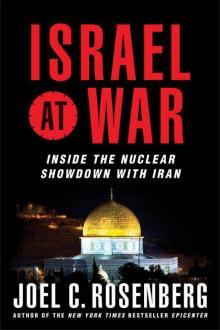 Israel at War: Inside the Nuclear Showdown With Iran
Israel at War: Inside the Nuclear Showdown With Iran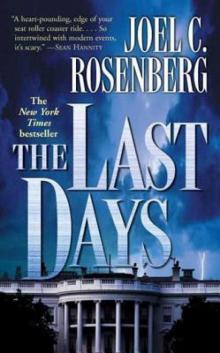 The Last Days
The Last Days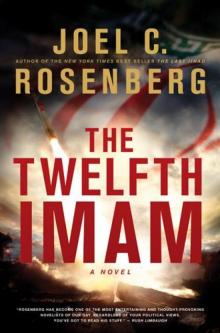 The Twelfth Imam
The Twelfth Imam Epicenter 2.0
Epicenter 2.0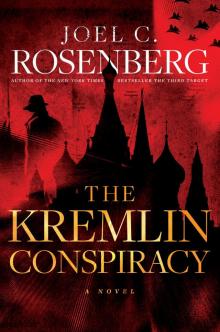 The Kremlin Conspiracy
The Kremlin Conspiracy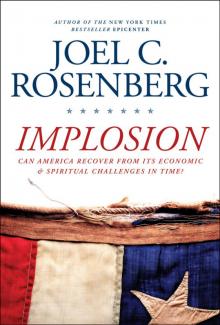 Implosion: Can America Recover From Its Economic and Spiritual Challenges in Time?
Implosion: Can America Recover From Its Economic and Spiritual Challenges in Time? The Third Target: A J. B. Collins Novel
The Third Target: A J. B. Collins Novel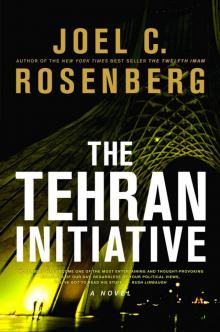 The Tehran Initiative
The Tehran Initiative Inside the Revolution
Inside the Revolution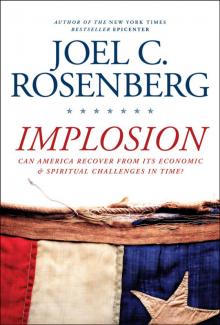 Implosion
Implosion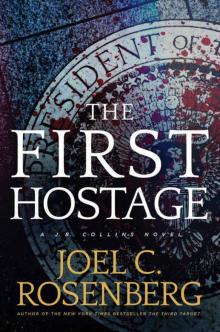 The First Hostage: A J. B. Collins Novel
The First Hostage: A J. B. Collins Novel